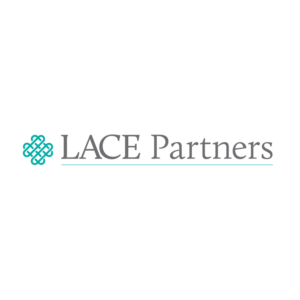Home » Knowledge Hub » Workplace Culture » Retaining the Workforce: How to reduce bias and be inclusive
Retaining the Workforce: How to reduce bias and be inclusive
19 November 2024 Workplace Culture

Story by
Lauren Neal Founder and Chief Programme Creator at Valued at Work

Lauren Neal, Founder and Chief Programme Creator at Valued at Work And author of ‘Valued at Work: Shining a Light on Bias to Engage, Enable, and Retain Women in STEM‘ on how your business should address bias to become more inclusive.
In 2021, ‘The Great Resignation’ became a term synonymous with the high number of employees leaving their jobs around the world, and particularly those from under-recognised groups. Even today, common reasons for resigning include:
- Hostile work environments
- Lack of opportunities for career advancement, and
- Generally non-inclusive workplace cultures.
A significant contributor to these issues is bias – often unconscious – that influences workplace dynamics and decision-making. But as a leader, what can be done? Addressing bias is essential to fostering an inclusive culture that retains talent. To create sustainable change, particular focus is needed on how bias impacts the below aspects of the workplace and what can be done about it:
- Organisations behaviours;
- Inclusion of the right skills; and
- Enabling and supporting future leaders.
Understanding and acknowledging bias in organisational behaviours
Leaders often look to those reporting to them for advice on any issues – whether that be about the delivery of work or about people and interpersonal relationships. Delivery of work is a tangible issue where most can find solutions to address any problems, but it is much more difficult when it concerns people. Biases affecting team dynamics can be subtle and very challenging to identify. A starting point to understand these biases:
- Create safe spaces for dialogue by creating or joining an employee resource group. In safe spaces such as these, employees are encouraged to share their real-life experiences with bias without fear of retaliation or fear of their experiences being shared outside of the group. This will help leaders gather insights into how bias manifests in the workplace.
- Identify inauthenticity in leadership and recognise the importance of authenticity in combating bias. Identify and showcase authentic role models at all levels based on their performance, behaviours, and internal or external recognitions. Those individuals will feel seen and can help build relationships throughout the organisation. By showcasing genuine role models who exhibit inclusive behaviours and values, organisations can foster an environment that encourages openness and trust.
- Measure psychological safety regularly to understand the team’s level of comfort with each other in expressing their thoughts and concerns and use this data to identify areas for improvement. Addressing psychological safety can help uncover instances of bias, as employees may be hesitant to speak out in biased environments. Emotional intelligence is vital for leaders and showing vulnerability and authentic humility helps to connect with their teams by building trust and transparency.
The impact of bias on skills recognition and performance
Recognising existing talent within an organisation is essential for employees to feel valued – there is nothing more frustrating than feeling passed over! It is particularly troubling when highly competent and confident individuals are stuck in unchallenging roles. Bias can severely hinder the recognition and advancement of talent within an organisation, especially when skills and contributions are overlooked due to biased perceptions. Key areas where a leader can understand and address the situation:
- How much office housework does this person do? Bias can lead to certain individuals consistently taking on administrative or menial tasks that do not align with their skills. This can include sharing their screen during meetings (even when not the presenter), booking the meeting rooms, organising away days, etc. If these types of activities keep falling to the same person, and are not part of their job description, there is a problem that must be solved. Employees should be regularly asked if the work they are doing is meaningful and will help them develop their careers, and leaders should actively assess workloads to ensure fair distribution of responsibilities.
- Is constructive feedback being provided? Without timely, actionable feedback, it is difficult for anyone to know how they are doing or how to move forward. Bias can influence the type and quality of feedback received, with some employees getting more constructive criticism than others. Employees should be asked about the last time they received feedback and rate the quality and impact it had on their development actions. This will help to identify if improvement on providing feedback is needed and ultimately how to standardise feedback processes to minimise bias.
- Is bias getting in the way? Bias affects perceptions of behaviour, leading to double standards. For instance, a man and a woman exhibiting the same assertive behaviour may be perceived differently – one as “the boss” and the other as “bossy”. These biases can have a significant impact on how a person is treated in the team. It is crucial for leaders to facilitate discussions about these biases and their impact on workplace culture to promote transparency and understanding.
Empowering your future leaders
Leadership continues to evolve and in today’s world, many no longer tolerate authoritarian approaches. To cultivate an inclusive workplace, today’s leaders must prioritise developing the next generation while addressing bias in leadership styles. To help employees reach their potential and be as competitive as possible, it is essential that these future leaders feel recognised and valued. The way leaders engage with and empower their teams can have lasting effects on workplace culture:
- Model ethical leadership – Leaders who do the right thing regardless of any short-term negative consequence will gather more respect than those found to take unethical actions. Showcasing role models who have spoken up without any negative impacts on their careers or reputations will help to encourage employees to do the right thing without fear of retaliation. This includes speaking out against bias.
- Diversity means nothing without inclusion – While diversity is essential for effective teams, it cannot exist without a commitment to inclusion. Leaders should actively work to eliminate bias from their diversity initiatives and ensure efforts are not seen as ‘box-ticking’. Instead, drive a culture of inclusion, for example, requesting input from each person during a meeting, and encouraging the team to really listen and consider each input.
- Advocate for all employees – Bias can often lead to the under-recognition of talent, particularly among under-recognised groups. Great work needs to be recognised by leaders regularly advocating for others to ensure they are not forgotten. This advocacy helps set employees up for success and paves the way for their career progression.
Conclusion
Bias in the workplace often leaves employees feeling invisible, frustrated, and undervalued, but organisational leaders have the ability and opportunity to change this. Great leaders will make time to get to know employees at different levels of the organisation and learn about their experiences, needs, biases they face, and expectations at work. While some level of workplace attrition may be unavoidable, the goal is to keep it within acceptable levels and be consistent across all demographics. By addressing bias and fostering inclusive workplace cultures that benefit everyone, leaders can create psychologically safe environments that encourage diverse perspectives and contributions, ultimately enhancing organisational success.







